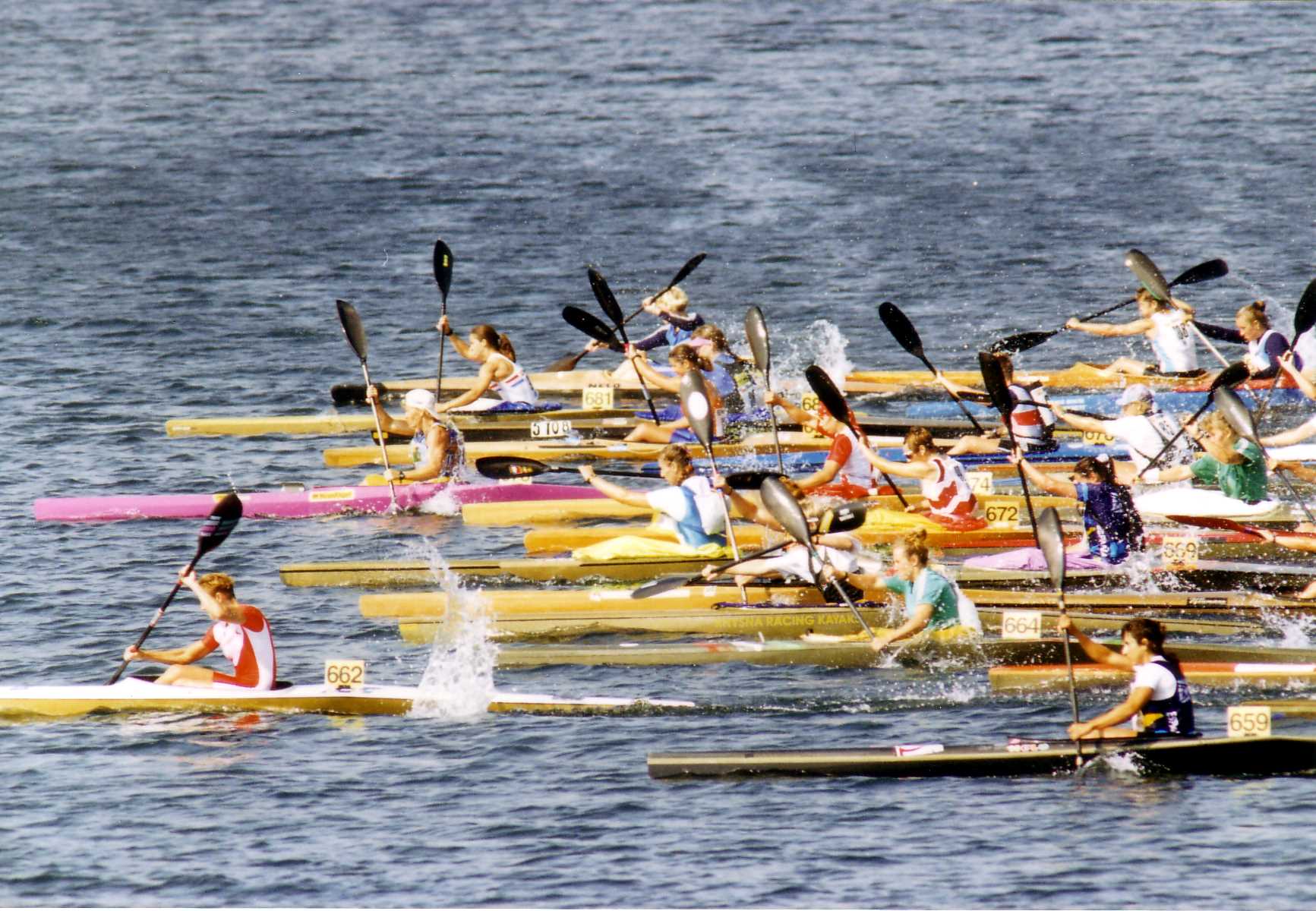Resilient Leadership: Resilient Decision Making
The fourth element in the Resilient Leaders Elements model is Resilient Decision Making, which is about being able to take a valuable idea from concept to reality; challenging your own and others' biases; and considering the impact, pace and style of your decision making.
The sport of marathon kayak racing is fuelled by resilient decision making under pressure. A marathon race in kayaking is akin to being in the peloton on a road cycling race; the competitors are moving positions, you have to think quickly and correctly in the heat of the moment.
Creative Decision Making
During the race it’s essential to be creative in your decision making and work outside of the usual frame of reference, making it harder for your opponents to predict your next move.
To assist with creative decision making, in any domain, it’s useful to always assume there are different questions to be asked and different ways of seeing the same situation. To do this it helps to involve diverse opinion in your decision making, when you have time. If you collaborate with others who have different perspectives, together you will create new options. Cognitive diversity is critically important as the pressure rises, because it will give you the richest solution to a crisis due to the diversity of perspective.
Thinking Correctly Under Pressure
Throughout the year we have specific training sessions where we’re playing out different race scenarios, working out what is the best move in each situation. Over the course of a year we’ve played out so many eventualities that when it comes to racing I feel totally prepared and confident that I’ll make the right decision in the heat of the moment. This is crucial because in sport you don’t get a second chance to make the right decision.
If you come across a pressure situation that you haven’t experienced before and the chips are down, chances are you might choke. However, if you’ve thought through the different scenarios that could play out, then you are more likely to stay calm and make the correct decision under pressure.
What are the pressure situations in your world? What are the ‘what if’ scenarios that you need to prepare for? Is it sales pitches, client meetings, when crisis happens?
Robust Decision Making
In the days and weeks prior to a World Championship race I work with my team on the tactics for the race and we plan the strategy. We don’t actually know how the race is going to play out, I don’t know what my competitors are planning, much like in today’s economic environment, there’s uncertainty, and so we consider a range of possible scenarios that could play out during the race and make plans accordingly. This helps me to be robust in my decision making.
I would arrive at the World Championships with a plan A, a Plan B and a Plan C and I’d make a final decision during the race based on intuition and experience.
Of course with so much uncertainty in the economy right now it’s difficult to plan and you can’t prepare for all eventualities, but you can ask yourself a series of ‘what if’ questions so that you can scenario plan and create contingency strategies.
Versatile Decision Making
To an outsider watching me in the heat of battle at the World Championships, it might look like I’m adept at thinking on my feet and making the right decision in the moment under pressure and I am, but only because I’ve prepared for it; I’ve visualised the moment and created movies of it in my mind so I know exactly what to think and what move to make in the heat of the moment. I become versatile in my decision making.
I encourage you to think about the decisions that you make, do they create options and flexibility so that you are prepared for changing or uncertain situations?
To summarise, as a leader, when decision making is creative, robust and versatile, this is the impact:
‘Great decisions are made at the right time, with the right people, in the right place. Contingency options are always available so that the unexpected can be dealt with effectively and confidently’.
If you want to have impact as a leader both now and in the future you need to consistently apply all 4 resilient leaders elements. Resilient leaders will be at the heart of the post-pandemic recovery and there will be a need for every person to lead both themselves and others. In fact there has never been a more important time to equip yourself and your people with the tools to thrive in the face of adversity. I invite you to think about how you can become a resilient leader for your organization.
If you would like to understand more about your own strengths and areas of development in relation to the 4 elements, I encourage you to take this free RLE lite assessment.
You can also read about the other 3 elements in the links below.
For more information on this subject and our Resilient Leader’s open programme, please visit The Resilient Leader’s Toolkit | Beyond the Barriers or get in touch.

Published: Tuesday 9 February 2021
Written by: Anna Hemmings MBE, OLY



